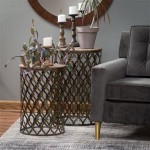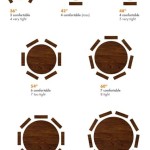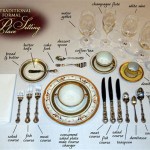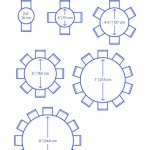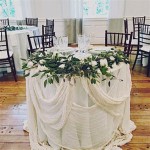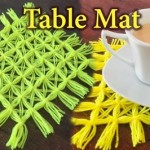How To Make A Table Runner With Border Fabric
Adding a touch of elegance and personality to a dining table is easily achieved with a custom-made table runner. Incorporating border fabric elevates the design and provides a polished, professional finish. This article offers a comprehensive guide to creating a unique table runner using border fabric.
Gathering Materials and Tools
Before beginning the project, assembling the necessary materials and tools is crucial for a smooth and efficient process.
- Border fabric: Select a fabric with a distinct border pattern that complements the desired aesthetic.
- Lining fabric: Choose a durable and complementary fabric for the backing of the table runner.
- Measuring tape: Accurate measurements are essential for a well-fitting table runner.
- Scissors: Sharp fabric scissors ensure clean cuts and prevent fraying.
- Pins: Securely hold fabric layers together during the sewing process.
- Sewing machine: A sewing machine significantly speeds up the process and provides a professional finish.
- Iron and ironing board: Pressing seams and fabric ensures a crisp and polished final product.
- Thread: Select a thread color that matches or complements the fabrics.
Measuring and Cutting the Fabric
Accurate measurements are key to a perfectly sized table runner. Consider the desired length and width, accounting for the border pattern placement.
- Measure the table: Determine the table's length and width to calculate the appropriate table runner dimensions.
- Determine desired overhang: Decide how much fabric should drape over the table edges.
- Calculate fabric dimensions: Add the desired overhang to the table length or width (depending on the runner's orientation) and add seam allowances to calculate the final fabric dimensions.
- Cut the border fabric: Carefully cut the border fabric to the calculated dimensions, ensuring the border pattern is positioned as desired.
- Cut the lining fabric: Cut the lining fabric to the same dimensions as the border fabric.
Preparing the Border Fabric
Proper preparation of the border fabric ensures a neat and professional finish.
- Iron the fabric: Press the border fabric to remove any wrinkles or creases.
- Square the edges: Trim any uneven edges to ensure the fabric is perfectly rectangular.
- Inspect for flaws: Check the fabric for any imperfections or damage before proceeding.
Assembling the Table Runner
This stage involves joining the border fabric and lining fabric to create the table runner structure.
- Place fabrics together: Lay the border fabric and lining fabric with right sides facing each other.
- Pin the layers: Secure the fabric layers together with pins along the edges, ensuring the edges are aligned.
Sewing the Table Runner
Careful sewing ensures the table runner is durable and aesthetically pleasing.
- Sew the long edges: Using a straight stitch, sew along the two long edges of the fabric, leaving a gap for turning.
- Trim seam allowances: Trim the seam allowances to reduce bulk and create a cleaner finish.
- Clip the corners: Clip the corners diagonally, being careful not to cut the stitching, to allow for sharper corners when turned right side out.
Turning and Pressing
Turning and pressing the table runner transforms it into a polished, finished piece.
- Turn right side out: Carefully turn the table runner right side out through the opening left in the seam.
- Push out corners: Use a pointed tool, such as a chopstick or knitting needle, to gently push out the corners to create sharp, defined edges.
- Press the seams: Thoroughly iron the table runner, paying attention to the seams and edges, to create a crisp, professional look.
Finishing the Table Runner
The final steps ensure a polished and durable table runner.
- Stitch the opening closed: Carefully stitch the opening closed using a blind stitch or a straight stitch, depending on the desired finish.
- Final pressing: Give the entire table runner a final press to ensure a flawless presentation.
Optional Embellishments
Further personalize the table runner with additional embellishments.
- Adding decorative stitching: Consider adding decorative stitching along the border or edges for a more intricate design.
- Applying appliqués or patches: Enhance the visual appeal by applying appliqués or patches that complement the border fabric.
- Attaching tassels or fringe: Add a touch of elegance by attaching tassels or fringe to the ends of the table runner.
Care and Maintenance
Maintaining the table runner's appearance ensures its longevity.
- Cleaning: Follow the fabric care instructions for the specific materials used. Some fabrics may require hand washing, while others are machine washable.
- Storage: Store the table runner flat or rolled to prevent wrinkles and creases.

Sewing Easy Striped Table Runner Class

Nancy Zieman The Blog No Hassle Table Topper Sewing Tutorial And New Wildflower Boutique Fabrics

Diy Bordered Table Linen The Thread

Make A Stunning Runner From Pretty Border Print Quilting Digest

Border Print Demo

60 Degree Border Fabric To Make A Sweet Table Runner Pattern Quilted Runners Toppers

How To Make A Reversible Table Runner For Beginners

Diy Bordered Table Linen The Thread

Easy Striped Table Runner Pattern Tqc 272 Cary Quilting Company

Diy Bordered Table Linen The Thread
Related Posts

